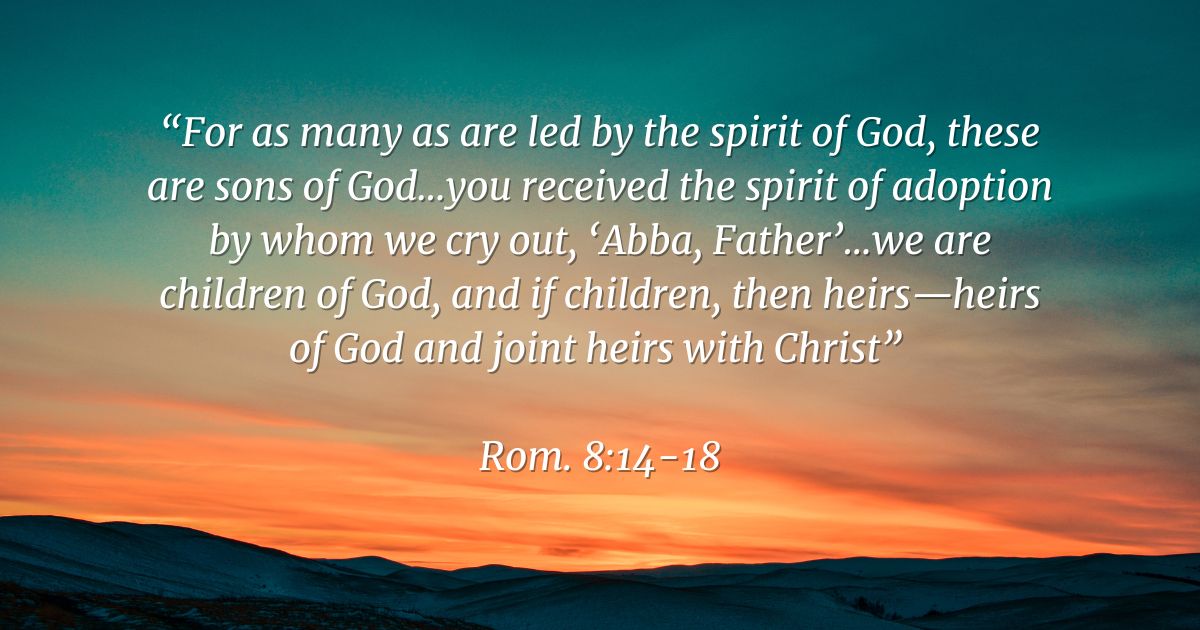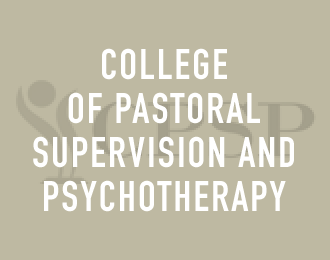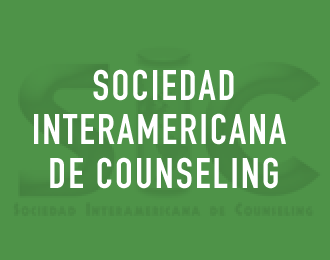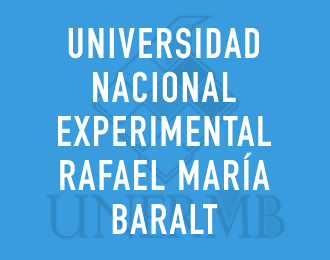Faithful Dialogues: The History of Prayer in Christianity
Esteban Montilla | 2 enero, 2025

“For I must pray with the spirit but also comprehending. I must sing with the spirit, but also with understanding” (1 Corinthians 14:15).
What do we mean by prayer?
Prayer is one of the most important spiritual practices in linear religions such as Judaism, Christianity, and Islam. In these faith groups, God is conceived as a being and, therefore, someone with whom one can have a relationship. One means to build, maintain, and nurture that connection through communication, as one share one’s thoughts, feelings, and aspirations. When it takes place in the context of dialogue, this exchange of ideas, affection, and expectations brings people closer, unites, and enlivens.
This is how we try to practice dialogue in prayer because the intention is to foster closeness or intimacy. For this to occur, appropriate communication is required. Communication uses language but goes beyond the oral in that it can happen through concrete actions, signs, writing, art, aesthetics, cuisine, and architecture. Therefore, praying requires a learning process that occurs throughout life. This was well known to the initial disciples of Jesus of Nazareth, who asked him to instruct them to pray, “Lord, teach us to pray, just as John taught his disciples” (Luke 11:1, NIV).
This conversation with God, as the great Clement of Alexandria (ca. 150-216 A.D.) defined prayer, can be a very enriching experience because closeness or intimacy with another being can promote one’s desire to shape the character of another. In Christianity, God is conceived of as compassionate, loving, benevolent, kind, just, righteous, fair-minded, incorruptible, and wise. That is why, by enjoying the dialogue and experiencing that closeness with God, one can be moved to reflect the same with fellow human beings and the rest of creation.
Prayer is a means of communication that nurtures and strengthens intimacy with God. As in human relationships, intimacy has a mutual nature based on trust, humility, loyalty, justice, and love. In this sense, praying implies showing commitment to the maintenance and flourishing of the relationship. Hence, to pray is not simply to ask but to converse with respect, admiration, and consideration.
The mutuality of this relationship suggests that there should be a dialogue in which both people are willing to communicate their thoughts, feelings, dreams, worries, and joys. In this type of mutuality, there is no room for monologues, coercion, or debates since these, besides suffocating the relationship, minimize the dignity of the person who only listens.
Unfortunately, too much reliance is placed on spoken language or logos, thus losing the transformative power of communication, which in context is not something that human beings do but what they are. This communication is as vital as water and food. One exists to communicate. Communication is life. That is why the inspired writers of the Bible present God as the Word or the Dialogue.
Concrete deeds or behaviors are the most straightforward and common way of communicating. These actions “speak loudly” about what is valuable to us, how much we care about the other person, how committed we are to maintaining that relationship, and our life priorities. To “pray without ceasing” (1 Thessalonians 5:17) is an invitation to be aware of the ongoing messages we are communicating to God and aware of what He is sending us in many ways and forms.
What are the functions of prayer?
Prayer is a means to an end, which is closeness with God. Intimacy or closeness is possible when we dialogue (listen, understand, and attend to each other), spend time together, enjoy shared moments, and eat together. This communion with God then promotes the ultimate end or goal of prayer: to act according to God’s will (be compassionate, act with humility, and behave justly). So, praying or dialogizing with the Eternal equips us to live as he lives.
The invitation to pray in the Christian religion occurs because it is from this practice that we can strengthen our relationship with God and, consequently, imitate his character. The intention of prayer is not to change God’s will, much less to move him to grant us his favor. This is majestically stated by Søren Kierkegaard (1813-1855), who, in one of his discourses on God as an immutable being, proposed that “Prayer does not change God, but it changes the one who offers it” (p. 42).
Prayer, then, has the central purpose of changing human attitudes, feelings, and actions. From this perspective, the main functions of praying include: 1) assisting the human being to revise their attitude towards life, 2) breaking with loneliness by moving from individualism to communion, 3) consulting a wise being to increase wisdom, 4) properly managing the anxiety of existence amid uncertainties, and 5) understanding that the human beings do not know everything and that their wisdom has limits.
To summarize, in prayer, we communicate with a being who is on our side, who is our ally, who is interested in our well-being, who cares about us, who listens with empathy, who values the relationship, who understands us, and who desires the best for us. In this relationship, we feel very well accompanied, and we put a brake on loneliness.
However, there are also unhealthy uses of prayer, where instead of connecting the person with God and with other people, it distances them, disconnects them, and excludes them from communion. These are examples of these isolating prayers: if the intention is to change the other person (God) or coerce him to change his will and grant the favor; if the purpose is to achieve personal prominence; thinking that if the right words are said (abracadabra), the favor can be achieved; when prayer is used to promote guilt or shame and when praying with a heart full of hatred towards our fellow humans.
“When you pray, do not be like the hypocrites, who like to pray standing in the synagogues and on the corners of the squares so that people will see you. And when you pray, do not repeat useless words, as the heathen do, who think that the more they speak, the more God will listen to them… If you forgive others for the wrong they have done to you, your heavenly Father will also forgive you” (Matthew 6:5, 7, 14, DHH).
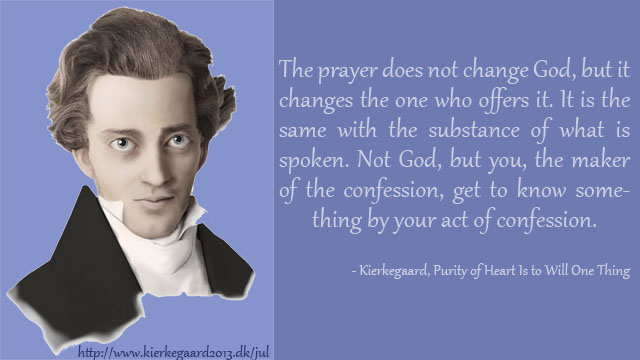
How to pray?
The act of praying is to move from individualism to communion with another person and break with loneliness. In this existence in communion, one reveals oneself and knows oneself as an individual. The way one prays evolves along with our human development. Experiences, due reflection on them, education throughout one’s life, and the practice of faith serve as the teacher’s par excellence in learning to pray.
That is why it is so important to pay attention to what one says when praying and what other individuals express in prayers, as they are very revealing. Prayer can be a vehicle to become aware of one’s strengths, growth edges, shortcomings, excesses, and unhealthy desires. These are other reasons why learning to pray is a lifelong learning task. If one prays well, one knows oneself well and thus lives more fully.
Prayer can be a spontaneous or planned act, where the pray-er — who wants to pray, speak, or dialogue well — shows a disposition of openness, decides to put their needs on hold, and thus shows a genuine interest in the other being. In this interpersonal act, dialogue is initiated not to change the other person but to enjoy each other’s presence and companionship. So, the intention is not to ask but to let each other know what one thinks, feels, and aspires to at that moment and in life.
Prayer is an interpersonal experience between an individual and God, between a person and another person, or between a person and a group. In any of these scenarios, the purpose is dialogue, which requires understanding what is being expressed. Hence, I know that the signs used for dialogue must be familiar, for example, speaking the same language, using a vocabulary appropriate to the participants in the communication, and focusing on dignifying conversations. Furthermore, in this prayer posture characterized by humility, there is no room for protagonism, haughtiness, and control of the other.
The most crucial premise in Christianity about prayer is to pray as Jesus of Nazareth did. His proposal, or “God Reign,” had entirely different religious beliefs and practices from those of biblical Judaism. His novel project did not include the idea of a temple where people would go to worship. Instead, he proposed meeting in any place to agree to go out to worship by assisting the neediest people in the community.
That plan to have a temple where God dwelt and where bloodthirsty sacrifices could be offered to him by slaughtering and roasting animals seemed very improper and obsolete. This point is made evident by the apostle Paul when he says: “The God who made the world and all things in it is Lord of heaven and earth.” He does not live in temples made by men, nor does he need anyone to do anything for him, for it is he who gives us all life, air, and all other things” (Acts 17:24, DHH).
Other very particular beliefs of this model of life or “reign of heaven” included eliminating circumcision, as a practice that excluded women because they did not have a penis, and, in its place, it established baptism as the rite of initiation into this new faith. The way of praying also constituted something new by proposing the metaphor of God as a father who protects, cares, and provides affection and opportunities for recreation and integral development. “When you pray, pray like this: Our Father, who art in heaven, hallowed be your name, your kingdom come, you will be done on earth as it is in heaven” (Matthew 6:9-10, NIV).
In the Hebrew Bible (Old Testament), God was spoken of as the father (Abba in the Aramaic language) but of a nation and not much of a person. “Is not your Father, your Creator, who made you and formed you?” (Deuteronomy 32:6, NIV). But praying to God as Father is foreign to the Hebrew Scriptures, as the emphasis is on presenting the deity as transcendent. On the other hand, Jesus of Nazareth was interested in presenting Elohim as close and accessible. This novel and scandalous proposal points to the close relationship humans can develop with God. “And you did not receive a spirit that enslaves you again to fear, but the Spirit who adopts you as sons and enables you to cry out, ‘Abba, Father’” (Romans 8:15, NIV).
In the letter to the Galatians parishioners, the apostle Paul tells them it was necessary to pray as Jesus of Nazareth did. “You are already sons.” God has sent the Spirit of his Son into our hearts, crying, “Abba! Father!” (Galatians 4:6, NIV). In anguish because of the imminence of his death, Jesus of Nazareth prayed like this: “Then Jesus went a little farther on, bent down to touch the ground with his forehead, and prayed to God that, if possible, this time might not come upon him. In his prayer, he said, ‘Abba, Father, with you all things are possible: deliver me from this bitter pill; yet not what I will, but what you will let it be done’” (Mark 14:35-36).
How to pray with other people?
Praying can occur interpersonally (the pray-er and God) or intergroup (several people and God). Group prayers arise for many reasons, including when facing an illness, experiencing a crisis, or consulting God. The invitation to pray for one another is based on the premise that loneliness is broken in a group, thus giving rise to a communion or cohesion that heals.
The Christian biblical text says: “Is anyone among you afflicted?” Let him pray! Is anyone in good spirits? Let him sing praises. Are any of you sick? Call the church elders to pray for them and anoint them with oil in the name of the Lord. The prayer of faith will heal the sick, and the Lord will raise them. And, if they have sinned, their sin will be forgiven. Therefore, confess your sins to one another and pray for one another that you may be healed. “The prayer of a righteous person is powerful and effective” (James 5:13-16, NIV).
Here, you can see the inspired author invites seeking the company of others, such as the religious leader who would initiate with prayer while anointing the affected parts with oil (the word used here for anointing is aleipho, which has a therapeutic medical application and is the same word used in the text about the Good Samaritan in Luke 10:34. For ceremonial anointing another very different word is used: “ekrio, crio, christ”, as in the case of Jesus, as the anointed one).” This union of the sacred dialogue, the application of the medicinal oil, and the therapeutic touch create a sense of closeness, care, and holistic healing.
In this text, James connects confessing to one another (the process known today as counseling or psychotherapy) with praying for one another, suggesting that this combination can bring healing. Prayer or dialogue in the context of justice is a powerful and effective restorative tool.
Praying with another human being (directly in front of the person or by other electronic means or by simply letting them know) offers a bonding opportunity that lessens human loneliness. For example, by allowing another person to see that you are praying for them, it communicates to them that they are not alone, that there is a community that accompanies them, that there is a group of people who care about them, and that together they will face this difficult journey.
Prayer cannot be dissociated from daily life and our encounters during the day’s chores. The point is to join the effort with another human being who also likes to enjoy God’s company and thus worship Him by acting as He would. “This I say to you, if two of you agree here on earth to ask for something in prayer, my Father in heaven will give it to you. For where two or three are gathered in my name, I am amid them.” (Matthew 18:19-20, DHH).
In the prayer proposed by Jesus of Nazareth, we notice the importance of praying in the plural. In the culture of the biblical context, individualism is a foreign concept because a human being cannot be conceived as existing outside the community. Survival and human flourishing are possible in communion with allied individuals.
“Our Father, who art in heaven, hallowed be thy name, thy kingdom come, thy will be done on earth as it is in heaven.” Give us this day the bread we need. Forgive us our debts, as we also have forgiven our debtors. And lead us not into temptation but deliver us from evil” (Matthew 6:9-13, NASB). That is why when a person invites us to join him in prayer, it is paramount that the plural is used and that one is included because the spirit of prayer is justice, equality, and never believing oneself better or superior to anyone.
What are the precautions when praying for others?
Knowing how to pray is crucial, as prayers can benefit human well-being but can also generate distress and cause harm. For example, researcher Harold Koenig (2007) studied patients over fifty with cardiopulmonary diseases and found that participating in religious activities such as prayer helped them reduce the levels of depression they experienced while hospitalized.
Other scientists such as Margaret Poloma and Brian Pedlenton (1991) found that the key to the benefits of prayer is not so much in the frequency as in what happens inside the person during prayer and the type of prayer. They analyzed the four types of prayer suggested by James B. Prat (1920) and Friedrich Heiler (1932): 1) meditative prayer-reflecting on God; 2) ritualistic prayer-reading prayers or reciting them from memory; 3) petitionary prayer-asking God to meet specific needs of oneself or others, and 4) colloquial prayer-communicating with God in a conversational style and found that meditative prayer was the most beneficial followed by colloquial and ritualistic prayer. The least associated with overall satisfaction was petitionary prayer.
Scientific studies on intercessory prayer yield very controversial findings. For example, researcher Herbert Benson (2006) and colleagues conducted a study in six hospitals. They randomly assigned patients with cardiovascular conditions into an experimental group that would receive prayer, another group that would not, and another group that was told they would receive prayer. The prayers were offered by Christian believers, who would pray that there would be no complications from the surgery, that recovery would be quick, and that the surgery would be successful. The findings did not show a significant difference between the three groups.
These results were the same as those found by Mayo Clinic scientist Jennifer Aviles and colleagues (2001), who, for two years, worked with 799 patients with cardiovascular disease and found that intercessory prayer had no significant effect on expected medical outcomes. David Hodge (2007) reviewed the scientific literature on intercessory prayer and found that this religious practice does not appear to alter expected outcomes in general health.
There are dangerous aspects to the practice of intercessory prayer in that one may come to believe that by uttering a few words on behalf of another person, one has already done what is necessary, and thus, praying individuals may disengage from social engagement. “Suppose a brother or sister has nothing to clothe himself or herself and lacks daily food, and one of you says to him or her, ‘Go well; wrap up warm and eat your fill, but do not give him or her what is needed for the body. What good will that do?’” (James 2:15-16, NIV).
Another problem with intercessory prayer is that it can suggest an extremely sick and cruel characteristic of God. It projects onto God the common political practice called lobbying, where the attention of a political leader is sought, who, upon seeing the multiple petitions or signatures, may then move to grant them the favor the community requires. This can be seen in those “prayer chains” where people believe that if more people pray for that person, God can finally show his goodness and give them what they ask for. Furthermore, this perspective loses sight of the fact that prayer is not to inform God but to break through loneliness by including His presence and companionship. “Do not be like them, for your Father already knows what you need, before you ask him” (Matthew 6:8, DHH).
How did Jesus of Nazareth and his disciples pray?
The novel proposal of prayer suggested by Jesus of Nazareth implied the possibility of having an intimate relationship with God. Hence, the metaphor from the family where presents God as a loving, kind, and caring father. Because of his Galilean roots, it makes sense that he refers to God only as El or Elohim. “At that very hour, Jesus cried out loudly, Eli, Eli, lemah sabachthani (i.e., My God, my God, my God, why have you forsaken me?” (Matthew 27:46, DHH). He likely wanted to avoid referring to God in the same way as did the Judahites, who generally presented Yahweh as a distant and fearful God. On his side, he then suggests approaching and praying to God as to a father who cares, provides tenderness, and is interested in the welfare of his sons and daughters. “Father, if you are willing, do not make me drink this bitter drink; yet not my will, but yours be done” (Luke 22:42, NIV).
The disciples of Jesus of Nazareth also referred to the deity as Father, Abba, or God. “I ask the God of our Lord Jesus Christ, the glorious Father, to grant you the spiritual gift of wisdom and to manifest himself to you so that you may truly know him. I ask God to enlighten your minds so that you may know what the hope to which you have been called, how glorious and rich is the inheritance God gives to holy people, and how great and boundless is his power, which is at work in us who believe” (Ephesians 1:17-19, DHH) is. They also referred to God as Lord (Kurios), which could refer to the God of the Jews known as Yahweh, “Lord, you who made the heaven, the earth, the sea and all that is in them” (Acts 4:24, DHH).
Conclusion
In the life project of Jesus of Nazareth called the “God Reign,” or “Reign of heaven,” we are invited to “devote ourselves seriously to prayer” (1 Peter 4:7) to achieve an understanding of the “breadth, length, depth, and height of the love of Christ and thus to be filled with the fullness of God” (Ephesians 3:18). Once one experiences this fullness of divine love, it becomes impossible to keep it private, and, thus, it becomes evident in thinking, feeling, and acting in daily life.
To “pray without ceasing” (1 Thessalonians 5:17) implies an attitude where one rejoices to walk continually in the company of God. This posture also had an element of protest, those practices that suggested praying three, five, or seven times a day. In this project, “Reign of Heaven,” it is expected that people who follow the teachings of Jesus of Nazareth long to walk in the presence of God by being ready to serve humanity. So, praying and acting are not opposed to each other but complement each other. Contemplation and action are not two aspects that are in conflict; on the contrary, they are permanently espoused.
Interpersonal prayer (between the praying person and God) represents an experience of community, where levels of closeness or transforming intimacy can be reached by imitation. One becomes very much alike in thinking, feeling, and acting as those with whom we spend time together.
This experience of private communion, when done without the desire to be seen, to be perceived as the best, and to aggrandize oneself, can be of great benefit to integral human development. “When you pray, do not be like the hypocrites, who like to pray standing in the synagogues and the corners of the squares so that people will see you,” I assure you that you already have your reward. But you, when you pray, go into your room, close the door, and pray to your Father in secret. And your Father, who sees what you do in secret, will give you your reward” (Matthew 6:5-6, DHH; Luke 18:9-14).
The Bible is, in essence, a set of prayers (dialogue between God and human beings) through narratives, songs, prose, poetry, plays, chronicles, letters, sermons, metaphors, and some historical events. Through these, we try to foster and strengthen the Creator’s relationship with a people and a community.
In it are found various ways of praying, including unintelligible groans expressing the psychological feeling of the person (Lamentations 1:2; Romans 8:26), murmurs and tears (1 Samuel 1:10-15; Job 26:14), prostrations (Genesis 43:26; Psalms 5:7; Mark 5: 6), hand motions (Exodus 9:29, 33; Psalms 134:2; 1 Timothy 2:8), dances (1 Chronicles 13:8; Psalms 149:3), shouting and shouting (Psalms 47:1), and individual and communal verbal prayers (Genesis 32:9-12; Psalms 25; Matthew 6:9-13; Romans 11:33-36). The use of creativity and imagination (meditation) to achieve inner peace, experience the presence of the Spirit, and transcend the realities of the present also represent other ways of praying.
Group or communal prayer is an opportunity to deepen our bond with God and strengthen our relationships with one another. Whatever prayer strategy is chosen to nurture and enliven the relationship with God requires a committed practice that reflects God’s character by acting in love, walking in humility, and practicing justice.
Prayers serve as strategies to strengthen the connection with God and assist the human being in the search for meaning before the perplexities of life, in visualizing a better tomorrow, and in acquiring existential balance. Likewise, prayer also functions as a strategy to be still, appreciate silence, combat the illusion of self-sufficiency, exercise self-listening, foster self-knowledge, and avoid giving up in the face of life’s challenges.
Some of my prayers
God is with us.
Creator of the universe and life. Thank you for this opportunity to share and celebrate your presence with us. Thank you for seeing you clearly in each of your creations. Thank you for opening our eyes wider so we can see you better in our fellow human beings, animals, plants, and other world wonders. Thank you for seeing us as we are and celebrating the love you have shared with each one of us. In your sacred name, we give you gratitude. Amen
Compassionate God
Loving and Eternal God. Your love and righteousness inspire me to do my best to reflect your character. Your kindness is contagious, and your compassion invites me to imitate you. Your presence fills me with peace as it frees me from paralyzing fears. Your care sustains me through the people you love and put in my path. You are my model. Amen.
God of knowledge
Eternal God, thank you for allowing us to increase our wisdom. With this knowledge, we can make better choices and thus have a fuller life. Your wisdom inspires us to continue growing so we may approach your intellectual stature. Your knowledge motivates us to continue to grow until we live according to your will. In your holy name, we thank you.
God of freedom
Eternal God and Liberator, thank you for allowing us to see, speak, feel, hear, taste, smell, and act freely. Your presence in our lives has set us free. Your presence removed all the chains that bound us and brought down the hindrances in our existential journey. Thank you for freeing us to love fully.
God be my teacher.
Eternal God teaches me to be more generous, to be more compassionate, and helpful, value my fellow human beings more, celebrate human diversity, practice rest, work hard, strive for goals within my will, take good care of my creation, believe in love, to be more efficient, to reflect your thinking and feeling, to live as you live; in love and justice. Amen!
God of the community
Our Father, we thank you for being very attentive to us, and throughout the history of humanity, you have sent us messengers who remind us of the commission you gave us to care for and cultivate the planet, to build each other up, of the importance of filtering each of our actions through the sieve of justice and love and that as mortal beings death awaits us. Thank you, beloved Father, for allowing us to extend your goodness by assisting every being in need that we encounter on our journey through life. We ask this in the name of Jesus of Nazareth.
God of Jesus of Nazareth
Eternal God, thank you for showing us how to live a humanity marked by love and justice in Jesus of Nazareth. We want to imitate his character by thinking, feeling, and acting as he lived. We want to follow the model of life or “Reign of heaven” that he taught his disciples in living inclusively, where we do not discriminate by social status or personal identity but by behaviors marked by cruelty and injustice. We simply long to live as he lived. In the name of Jesus of Nazareth. Amen.
“Lord, give us weak eyes to look upon things of little value and clear eyes to behold you in all your truth.” (Søren Kierkegaard, 1849).
References
Benson, H., Dusek, J. A., Sherwood, J. B., Lam, P., Bethea, C. F., Capenter, W., et al. (2006). Study of the therapeutic effects of intercessory prayer (STEP) in cardiac bypass patients: A multicenter randomized trial of uncertainty and certainty of receiving intercessory prayer. American Heart Journal, 151, 934-942.
Clemente de Alejandría (ca. 150—ca 216, 2005). Stromata. Séptimo libro. Stromata VI-VIII. Vida intelectual y religiosa del cristiano. Madrid, España: Editorial Ciudad Nueva
David Hodge (2007). A Systematic Review of the Empirical Literature on Intercessory Prayer. Research on Social Work Practice 2007; 17; 174.
Friedrich Heiler (1932). Prayer. A Study in the History and Psychology of Religion. London, UK: Oxford University Press.
Harold G. Koenig (2007). Religion and Remission of Depression in Medical Inpatients with Heart Failure/Pulmonary Disease. Journal of Nervous & Mental Diseases. Volume 195. (5), p 389–395.
Jennifer M. Aviles, Ellen Whelan, Debra Hernke, Brent Williams, Kathleen Kenny, Michael
O’Fallon and Stephen Kopecky (2001). Intercessory Prayer and Cardiovascular Disease
Progression in a Coronary Care Unit Population: A Randomized Controlled Trial. Mayo Clin Proc. 76:1192-1198.
Poloma, M. M., & Pendleton, B. F. (1991). The effects of prayer and prayer experiences on measures of general well-being. Journal of Psychology and Theology, 19, 71–83.
Pratt, J. B. (1920). The Religious Consciousness. A Psychological Study. New York, NY: Macmillan and Company.
Søren Kierkegaard (1847, 2009). Upbuilding Discourses in Various Spirits. An Occasional Discourse. Editado por Howard V. Hong y Edna H. Hong. Princeton, NJ: Princeton University Press.




